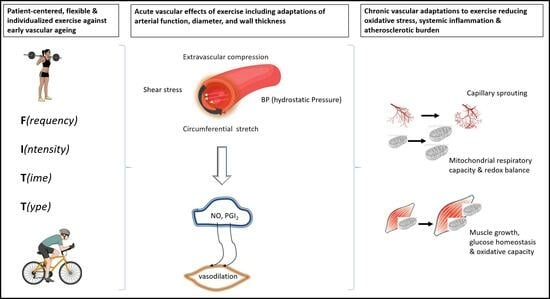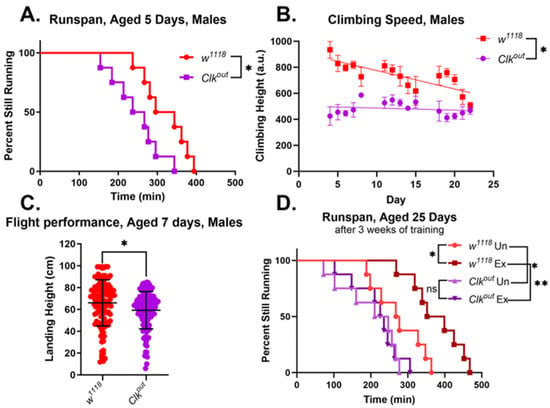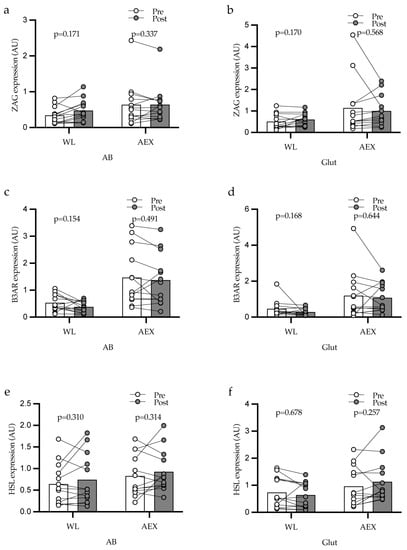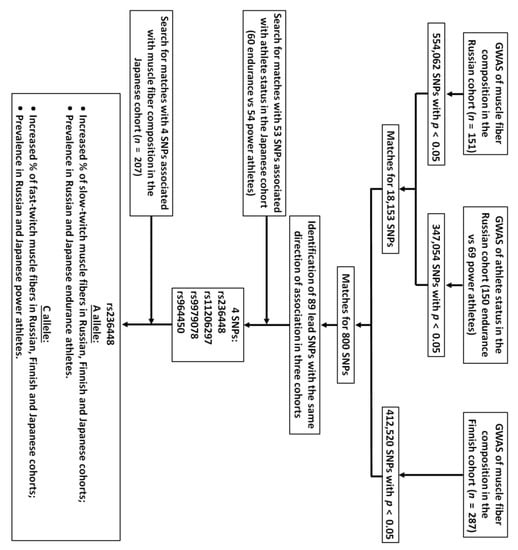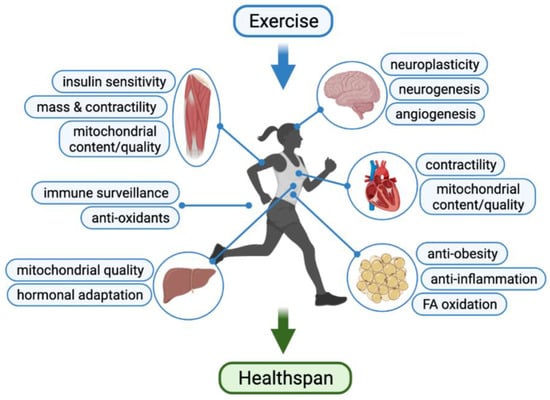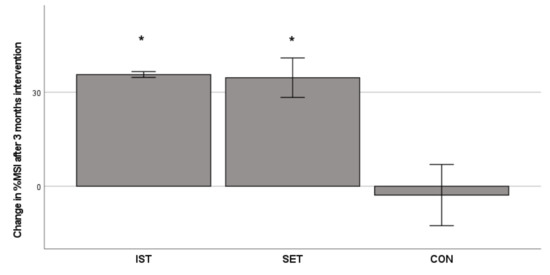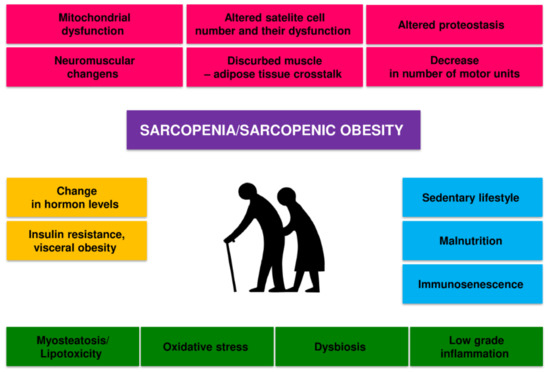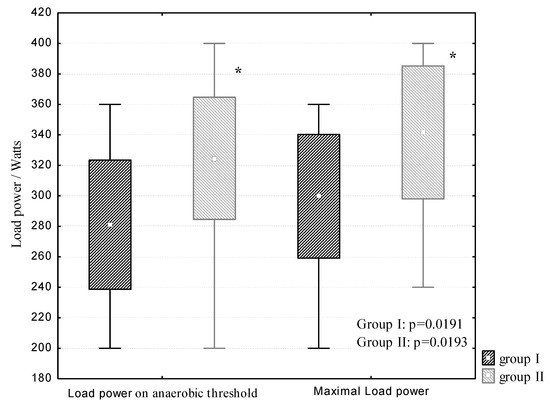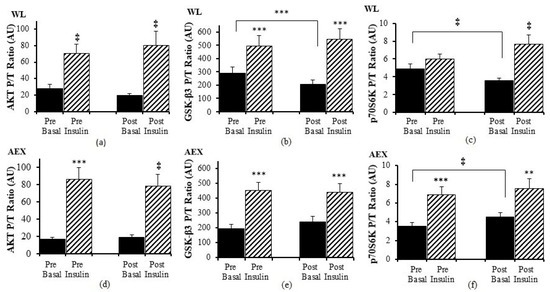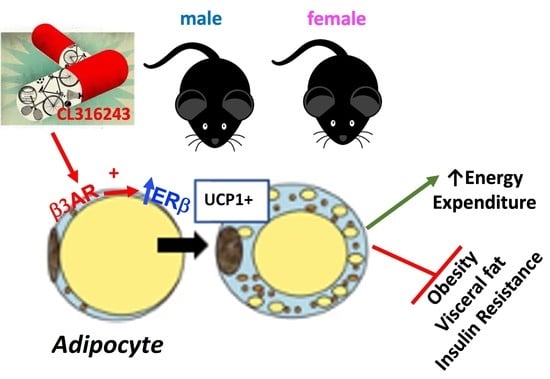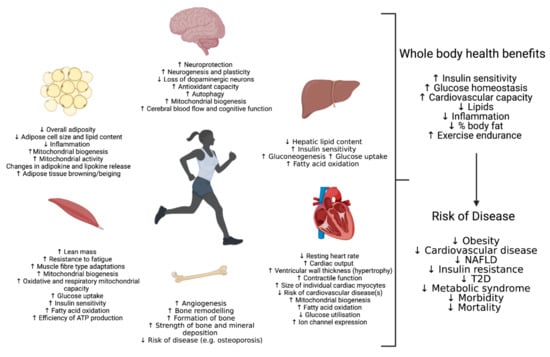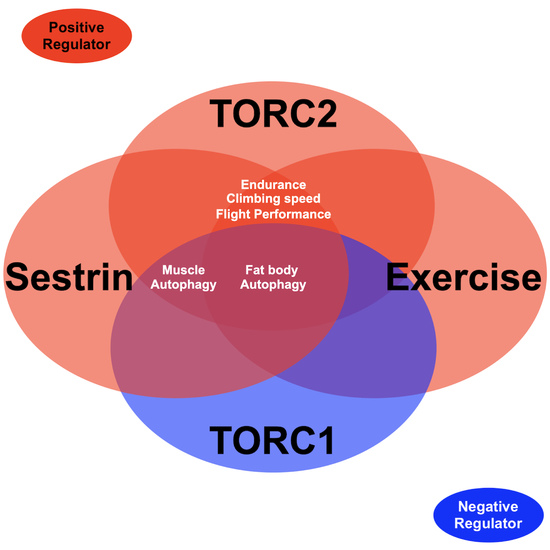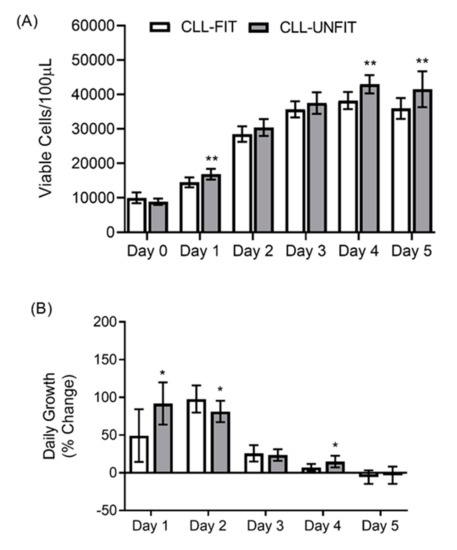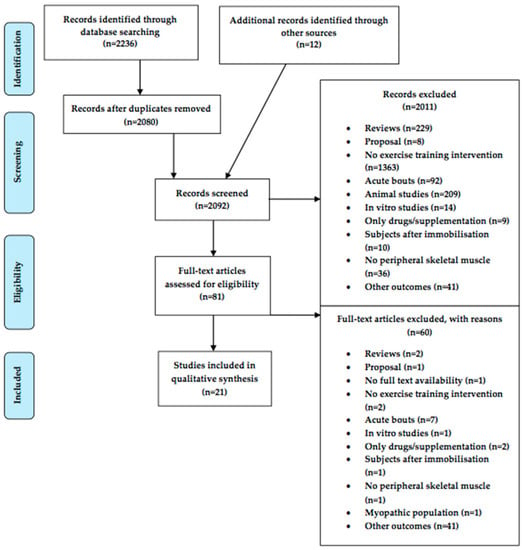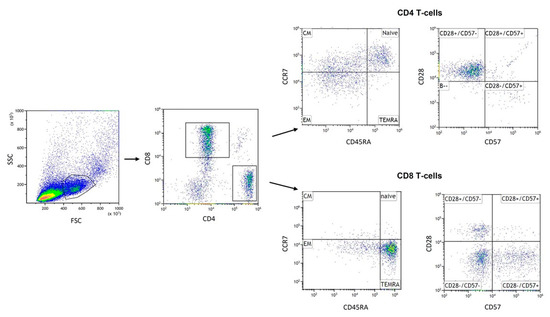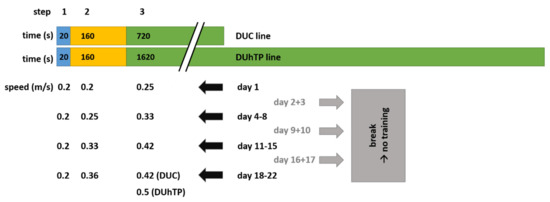Molecular Mechanisms of Exercise and Healthspan
(Closed)
A topical collection in Cells (ISSN 2073-4409).
Viewed by 73450
Share This Topical Collection
Editor
 Dr. Robert Wessells
Dr. Robert Wessells
 Dr. Robert Wessells
Dr. Robert Wessells
E-Mail
Website
Collection Editor
Department of Physiology, School of Medicine, Wayne State University, Detroit, MI 48201, USA
Interests: cardiac senescence; effects of exercise-training on functional aging; insulin/TOR signaling; fatty acid transporters
Special Issues, Collections and Topics in MDPI journals
Topical Collection Information
Dear Colleagues,
Exercise is increasingly being recognized as a broadly effective intervention for the preservation of long-term functionality during the aging process, leading to the popularization of the phase, “exercise is medicine”. Chronic exercise lowers the risk of many age-related diseases, including diabetes, heart disease, and several forms of cancer. Exercise is also generally thought to preserve basic mobility, cognitive function, and circadian rhythms, as well as contributing to psychological health. Despite the many benefits of chronic exercise, the mechanistic requirements for these benefits to accrue are still not fully understood, and are a highly active research topic. As many patients are unable to execute demanding exercise programs, the identification of downstream mechanistic targets to deliver the benefits of chronic exercise pharmaceutically has a transformative potential for the treatment of age-related disease and for the maintenance of healthy aging. In this Topical Collection, we examine recent findings in diverse model systems that increase our understanding of the molecular outputs of exercise, as well as their requirements for the myriad benefits that exercise provides.
Dr. Robert Wessells
Collection Editor
Manuscript Submission Information
Manuscripts should be submitted online at www.mdpi.com by registering and logging in to this website. Once you are registered, click here to go to the submission form. Manuscripts can be submitted until the deadline. All submissions that pass pre-check are peer-reviewed. Accepted papers will be published continuously in the journal (as soon as accepted) and will be listed together on the collection website. Research articles, review articles as well as short communications are invited. For planned papers, a title and short abstract (about 100 words) can be sent to the Editorial Office for announcement on this website.
Submitted manuscripts should not have been published previously, nor be under consideration for publication elsewhere (except conference proceedings papers). All manuscripts are thoroughly refereed through a single-blind peer-review process. A guide for authors and other relevant information for submission of manuscripts is available on the Instructions for Authors page. Cells is an international peer-reviewed open access semimonthly journal published by MDPI.
Please visit the Instructions for Authors page before submitting a manuscript.
The Article Processing Charge (APC) for publication in this open access journal is 2700 CHF (Swiss Francs).
Submitted papers should be well formatted and use good English. Authors may use MDPI's
English editing service prior to publication or during author revisions.
Keywords
Related Special Issue
Published Papers (17 papers)
Open AccessReview
Training the Vessels: Molecular and Clinical Effects of Exercise on Vascular Health—A Narrative Review
by
Karsten Königstein, Konstantina Dipla and Andreas Zafeiridis
Cited by 2 | Viewed by 2587
Abstract
Accelerated biological vascular ageing is still a major driver of the increasing burden of cardiovascular disease and mortality. Exercise training delays this process, known as early vascular ageing, but often lacks effectiveness due to a lack of understanding of molecular and clinical adaptations
[...] Read more.
Accelerated biological vascular ageing is still a major driver of the increasing burden of cardiovascular disease and mortality. Exercise training delays this process, known as early vascular ageing, but often lacks effectiveness due to a lack of understanding of molecular and clinical adaptations to specific stimuli. This narrative review summarizes the current knowledge about the molecular and clinical vascular adaptations to acute and chronic exercise. It further addresses how training characteristics (frequency, intensity, volume, and type) may influence these processes. Finally, practical recommendations are given for exercise training to maintain and improve vascular health. Exercise increases shear stress on the vascular wall and stimulates the endothelial release of circulating growth factors and of exerkines from the skeletal muscle and other organs. As a result, remodeling within the vascular walls leads to a better vasodilator and -constrictor responsiveness, reduced arterial stiffness, arterio- and angiogenesis, higher antioxidative capacities, and reduced oxidative stress. Although current evidence about specific aspects of exercise training, such as F-I-T-T, is limited, and exact training recommendations cannot be given, some practical implications can be extracted. As such, repeated stimuli 5–7 days per week might be necessary to use the full potential of these favorable physiological alterations, and the cumulative volume of mechanical shear stress seems more important than peak shear stress. Because of distinct short- and long-term effects of resistance and aerobic exercise, including higher and moderate intensities, both types of exercise should be implemented in a comprehensive training regimen. As vascular adaptability towards exercise remains high at any age in both healthy individuals and patients with cardiovascular diseases, individualized exercise-based vascular health prevention should be implemented in any age group from children to centenarians.
Full article
►▼
Show Figures
Open AccessArticle
Octopamine Rescues Endurance and Climbing Speed in Drosophila Clkout Mutants with Circadian Rhythm Disruption
by
Maryam Safdar and Robert J. Wessells
Viewed by 857
Abstract
Circadian rhythm disturbances are associated with various negative health outcomes, including an increasing incidence of chronic diseases with high societal costs. While exercise can protect against the negative effects of rhythm disruption, it is not available to all those impacted by sleep disruptions,
[...] Read more.
Circadian rhythm disturbances are associated with various negative health outcomes, including an increasing incidence of chronic diseases with high societal costs. While exercise can protect against the negative effects of rhythm disruption, it is not available to all those impacted by sleep disruptions, in part because sleep disruption itself reduces exercise capacity. Thus, there is a need for therapeutics that bring the benefits of exercise to this population. Here, we investigate the relationship between exercise and circadian disturbances using a well-established
Drosophila model of circadian rhythm loss, the
Clkout mutant. We find that
Clkout causes reduced exercise capacity, measured as post-training endurance, flight performance, and climbing speed, and these phenotypes are not rescued by chronic exercise training. However, exogenous administration of a molecule known to mediate the effects of chronic exercise, octopamine (OA), was able to effectively rescue mutant exercise performance, including the upregulation of other known exercise-mediating transcripts, without restoring the circadian rhythms of mutants. This work points the way toward the discovery of novel therapeutics that can restore exercise capacity in patients with rhythm disruption.
Full article
►▼
Show Figures
Open AccessArticle
Effects of Weight Loss and Aerobic Exercise Training on Adi-Pose Tissue Zinc α2-Glycoprotein and Associated Genes in Obesity
by
Shealinna X. Ge, Guoyan Li and Alice S. Ryan
Viewed by 1014
Abstract
Zinc α2-glycoprotein (ZAG) has been implicated in fatty acid metabolism and utilization and is lower in obese and higher in cachexic adults compared to those of normal weight. Previous studies suggest that ZAG binds to the beta3-adrenergic receptor (β3AR) to influence fatty acid
[...] Read more.
Zinc α2-glycoprotein (ZAG) has been implicated in fatty acid metabolism and utilization and is lower in obese and higher in cachexic adults compared to those of normal weight. Previous studies suggest that ZAG binds to the beta3-adrenergic receptor (β3AR) to influence fatty acid metabolism in adipose tissue by regulating hormone sensitive lipase (HSL). The purpose of this study is to investigate the effects of a six-month weight loss (WL) or aerobic exercise (AEX) intervention on adipose tissue and skeletal muscle ZAG mRNA levels and protein expression, as well as the expression of β3AR, and HSL. Abdominal adipose tissue (AB) and gluteal adipose tissue (Glut) and vastus lateralis muscle biopsies were performed before and after WL (
n = 13) or AEX (
n = 13). ZAG, HSL, and β3AR expressions were determined by RT-PCR, and ZAG and HSL plasma levels by ELISA. Body weight decreased by 9.69% (
p < 0.001) in WL and did not change with AEX. Maximal oxygen consumption (VO
2max) increased by 7.1% (
p < 0.005) after WL and by 16.69% (
p < 0.001) after AEX. WL significantly decreased body weight with a reduction of percentage of fat, fat mass, fat-free mass (FFM). AEX decreased percent fat and increased VO
2max, but did not change fat mass and FFM. Abdominal ZAG and HSL mRNA levels did not change significantly after WL or AEX. There were no changes in plasma ZAG, HSL and adipose tissue β3AR mRNA levels after WL and AEX. ZAG, HSL and β3AR mRNA expressions in adipose tissue are positively associated each other. Adipose tissue abdominal and gluteal HSL are negatively associated with HOMA-IR (Homeostatic Model Assessment for Insulin Resistance), and both ZAG and HSL adipose tissue are negatively associated with fasting glucose and the glucose area under the curve. Further work is needed to elucidate the role of ZAG and HSL in the propensity for weight gain and the ability of exercise to mitigate these responses.
Full article
►▼
Show Figures
Open AccessArticle
Genome-Wide Association Study Identifies CDKN1A as a Novel Locus Associated with Muscle Fiber Composition
by
Ekaterina A. Semenova, Hirofumi Zempo, Eri Miyamoto-Mikami, Hiroshi Kumagai, Andrey K. Larin, Rinat I. Sultanov, Konstantin A. Babalyan, Andrey V. Zhelankin, Takuro Tobina, Keisuke Shiose, Ryo Kakigi, Takamasa Tsuzuki, Noriko Ichinoseki-Sekine, Hiroyuki Kobayashi, Hisashi Naito, Jatin Burniston, Edward V. Generozov, Noriyuki Fuku and Ildus I. Ahmetov
Cited by 6 | Viewed by 2663
Abstract
Muscle fiber composition is associated with physical performance, with endurance athletes having a high proportion of slow-twitch muscle fibers compared to power athletes. Approximately 45% of muscle fiber composition is heritable, however, single nucleotide polymorphisms (SNP) underlying inter-individual differences in muscle fiber types
[...] Read more.
Muscle fiber composition is associated with physical performance, with endurance athletes having a high proportion of slow-twitch muscle fibers compared to power athletes. Approximately 45% of muscle fiber composition is heritable, however, single nucleotide polymorphisms (SNP) underlying inter-individual differences in muscle fiber types remain largely unknown. Based on three whole genome SNP datasets, we have shown that the rs236448 A allele located near the cyclin-dependent kinase inhibitor 1A (
CDKN1A) gene was associated with an increased proportion of slow-twitch muscle fibers in Russian (
n = 151;
p = 0.039), Finnish (
n = 287;
p = 0.03), and Japanese (
n = 207;
p = 0.008) cohorts (meta-analysis:
p = 7.9 × 10
−5. Furthermore, the frequency of the rs236448 A allele was significantly higher in Russian (
p = 0.045) and Japanese (
p = 0.038) elite endurance athletes compared to ethnically matched power athletes. On the contrary, the C allele was associated with a greater proportion of fast-twitch muscle fibers and a predisposition to power sports.
CDKN1A participates in cell cycle regulation and is suppressed by the miR-208b, which has a prominent role in the activation of the slow myofiber gene program. Bioinformatic analysis revealed that the rs236448 C allele was associated with increased
CDKN1A expression in whole blood (
p = 8.5 × 10
−15) and with greater appendicular lean mass (
p = 1.2 × 10
−5), whereas the A allele was associated with longer durations of exercise (
p = 0.044) reported amongst the UK Biobank cohort. Furthermore, the expression of
CDKN1A increased in response to strength (
p < 0.0001) or sprint (
p = 0.00035) training. Accordingly, we found that
CDKN1A expression is significantly (
p = 0.002) higher in the m. vastus lateralis of strength athletes compared to endurance athletes and is positively correlated with the percentage of fast-twitch muscle fibers (
p = 0.018). In conclusion, our data suggest that the
CDKN1A rs236448 SNP may be implicated in the determination of muscle fiber composition and may affect athletic performance.
Full article
►▼
Show Figures
Open AccessReview
Molecular Mechanisms of Exercise and Healthspan
by
Yuntian Guan and Zhen Yan
Cited by 14 | Viewed by 9163
Abstract
Healthspan is the period of our life without major debilitating diseases. In the modern world where unhealthy lifestyle choices and chronic diseases taper the healthspan, which lead to an enormous economic burden, finding ways to promote healthspan becomes a pressing goal of the
[...] Read more.
Healthspan is the period of our life without major debilitating diseases. In the modern world where unhealthy lifestyle choices and chronic diseases taper the healthspan, which lead to an enormous economic burden, finding ways to promote healthspan becomes a pressing goal of the scientific community. Exercise, one of humanity’s most ancient and effective lifestyle interventions, appears to be at the center of the solution since it can both treat and prevent the occurrence of many chronic diseases. Here, we will review the current evidence and opinions about regular exercise promoting healthspan through enhancing the functionality of our organ systems and preventing diseases.
Full article
►▼
Show Figures
Open AccessArticle
Three Months of Strength Training Changes the Gene Expression of Inflammation-Related Genes in PBMC of Older Women: A Randomized Controlled Trial
by
Keliane Liberman, Rose Njemini, Louis Nuvagah Forti, Wilfried Cools, Florence Debacq-Chainiaux, Ron Kooijman, Ingo Beyer and Ivan Bautmans
Cited by 5 | Viewed by 3088
Abstract
Here, we investigate changes in inflammation-related gene-expression in peripheral mononuclear blood cells (PBMC) by strength training. A total of 14 women aged ≥65 years were randomized into 3 months of either 3×/week intensive strength training (IST: 3×10 rep at 80% 1RM), strength endurance
[...] Read more.
Here, we investigate changes in inflammation-related gene-expression in peripheral mononuclear blood cells (PBMC) by strength training. A total of 14 women aged ≥65 years were randomized into 3 months of either 3×/week intensive strength training (IST: 3×10 rep at 80% 1RM), strength endurance training (SET: 2×30 reps at 40% 1RM) or control (CON: 3×30 sec stretching). Differentially expressed genes (fold change ≤0.67 or ≥1.5) were identified by targeted RNA-sequencing of 407 inflammation-related genes. A total of 98 genes (
n = 61 pro-inflammatory) were significantly affected. IST and SET altered 14 genes in a similar direction and 19 genes in the opposite direction. Compared to CON, IST changed the expression of 6 genes in the same direction, and 17 genes in the SET. Likewise, 18 and 13 genes were oppositely expressed for, respectively, IST and SET compared to CON. Changes in gene expression affected 33 canonical pathways related to chronic inflammation. None of the altered pathways overlapped between IST and SET. Liver X Receptor/Retinoid X Receptor Activation (LXR/RXR) and Triggering Receptor Expressed On Myeloid Cells 1 (TREM1) pathways were enriched oppositely in both training groups. We conclude that three months IST and SET can induce changes in CLIP-related gene expression in PBMC, but by affecting different genes and related pathways.
Full article
►▼
Show Figures
Open AccessReview
Multifactorial Mechanism of Sarcopenia and Sarcopenic Obesity. Role of Physical Exercise, Microbiota and Myokines
by
Jan Bilski, Piotr Pierzchalski, Marian Szczepanik, Joanna Bonior and Jerzy A. Zoladz
Cited by 53 | Viewed by 13526
Abstract
Obesity and ageing place a tremendous strain on the global healthcare system. Age-related sarcopenia is characterized by decreased muscular strength, decreased muscle quantity, quality, and decreased functional performance. Sarcopenic obesity (SO) is a condition that combines sarcopenia and obesity and has a substantial
[...] Read more.
Obesity and ageing place a tremendous strain on the global healthcare system. Age-related sarcopenia is characterized by decreased muscular strength, decreased muscle quantity, quality, and decreased functional performance. Sarcopenic obesity (SO) is a condition that combines sarcopenia and obesity and has a substantial influence on the older adults’ health. Because of the complicated pathophysiology, there are disagreements and challenges in identifying and diagnosing SO. Recently, it has become clear that dysbiosis may play a role in the onset and progression of sarcopenia and SO. Skeletal muscle secretes myokines during contraction, which play an important role in controlling muscle growth, function, and metabolic balance. Myokine dysfunction can cause and aggravate obesity, sarcopenia, and SO. The only ways to prevent and slow the progression of sarcopenia, particularly sarcopenic obesity, are physical activity and correct nutritional support. While exercise cannot completely prevent sarcopenia and age-related loss in muscular function, it can certainly delay development and slow down the rate of sarcopenia. The purpose of this review was to discuss potential pathways to muscle deterioration in obese individuals. We also want to present the current understanding of the role of various factors, including microbiota and myokines, in the process of sarcopenia and SO.
Full article
►▼
Show Figures
Open AccessArticle
Features of Metabolic Support of Physical Performance in Highly Trained Cross-Country Skiers of Different Qualifications during Physical Activity at Maximum Load
by
Olga I. Parshukova, Nina G. Varlamova, Natalya N. Potolitsyna, Aleksandra Y. Lyudinina and Evgeny R. Bojko
Cited by 2 | Viewed by 2851
Abstract
The purpose of our study was to identify the features of metabolic regulation in highly trained cross-country skiers of different qualifications at different stages of the maximum load test. We examined 124 highly trained cross-country skiers (male, ages 17–24). The group consisted of
[...] Read more.
The purpose of our study was to identify the features of metabolic regulation in highly trained cross-country skiers of different qualifications at different stages of the maximum load test. We examined 124 highly trained cross-country skiers (male, ages 17–24). The group consisted of two subgroups based on their competition performance: 61 nonelite athletes (Group I) and 63 elite athletes (group II), who were current members of the national team of the Komi Republic and Russia. The bicycle ergometer test was performed by using the OxyconPro system (Erich Jaeger, Hoechberg, Germany). All the examined athletes performed the exercise test on a cycle ergometer “until exhaustion”. The results of our research indicate that the studied groups of athletes with high, but different levels of sports qualifications are a convenient model for studying the molecular mechanisms of adaptation to physical loads of maximum intensity. Athletes of higher qualifications reveal additional adaptive mechanisms of metabolic regulation, which is manifested in the independence of serum lactate indicators under conditions of submaximal and maximum power from maximal oxygen uptake, and they have an NO-dependent mechanism for regulating lactate levels during aerobic exercise, including work at the anaerobic threshold.
Full article
►▼
Show Figures
Open AccessFeature PaperArticle
Pathways in Skeletal Muscle: Protein Signaling and Insulin Sensitivity after Exercise Training and Weight Loss Interventions in Middle-Aged and Older Adults
by
Alice S. Ryan, Guoyan Li, Shawna McMillin, Steven J. Prior, Jacob B. Blumenthal and Laura Mastella
Cited by 5 | Viewed by 3017
Abstract
Aging and obesity contribute to insulin resistance with skeletal muscle being critically important for maintaining whole-body glucose homeostasis. Both exercise and weight loss are lifestyle interventions that can affect glucose metabolism. The purpose of this study was to examine the effects of a
[...] Read more.
Aging and obesity contribute to insulin resistance with skeletal muscle being critically important for maintaining whole-body glucose homeostasis. Both exercise and weight loss are lifestyle interventions that can affect glucose metabolism. The purpose of this study was to examine the effects of a six-month trial of aerobic exercise training or weight loss on signaling pathways in skeletal muscle in the basal condition and during hyperinsulinemia during a glucose clamp in middle-aged and older adults. Overweight and obese men and women aged 50–70 years were randomly allocated and completed six months of either weight loss (WL) (
n = 18) or 3x/week aerobic exercise training (AEX) (
n = 17). WL resulted in 10% weight loss and AEX increased maximal oxygen consumption (VO
2max) (both
p < 0.001). Insulin sensitivity (hyperinsulinemic-euglycemic 80 mU·m
−2·min
−1 clamp) increased in WL and AEX (both
p < 0.01). In vivo insulin stimulation increased phosphorylation/total protein ratio (P/T) of protein kinase B (Akt), glycogen synthase kinase 3 beta (GSK-β3), 70 kDa ribosomal protein S6 kinase (p70S6k), insulin receptor substrate 1 (IRS-1), and insulin receptor (IR) expression (all
p < 0.05) but not P/T extracellular regulated kinase ½ (ERK1/2), c-jun N-terminal kinases (JNK), p38 mitogen-activated protein kinases (p38), or insulin-like growth factor 1 receptor (IGF-1R). There were differences between WL and AEX in the change in basal Akt P/T (
p = 0.05), GSK-3β P/T ratio (
p < 0.01), p70S6k (
p < 0.001), ERK1/2 (
p = 0.01) P/T ratio but not p38, JNK, IRS-1, and IGF-1R P/T ratios. There was a difference between WL and AEX in the insulin stimulation changes in GSK3 which increased more after WL than AEX (
p < 0.05). In the total group, changes in M were associated with changes in basal total GSK-3β and basal total p70Sk as well as insulin stimulation of total p70Sk. Protein signaling in skeletal muscle provides insight as to mechanisms for improvements in insulin sensitivity in aging and obesity.
Full article
►▼
Show Figures
Open AccessArticle
White Adipose Tissue Depots Respond to Chronic Beta-3 Adrenergic Receptor Activation in a Sexually Dimorphic and Depot Divergent Manner
by
Eric D. Queathem, Rebecca J. Welly, Laura M. Clart, Candace C. Rowles, Hunter Timmons, Maggie Fitzgerald, Peggy A. Eichen, Dennis B. Lubahn and Victoria J. Vieira-Potter
Cited by 6 | Viewed by 3024
Abstract
Beta-3 adrenergic receptor activation via exercise or CL316,243 (CL) induces white adipose tissue (WAT) browning, improves glucose tolerance, and reduces visceral adiposity. Our aim was to determine if sex or adipose tissue depot differences exist in response to CL. Daily CL injections were
[...] Read more.
Beta-3 adrenergic receptor activation via exercise or CL316,243 (CL) induces white adipose tissue (WAT) browning, improves glucose tolerance, and reduces visceral adiposity. Our aim was to determine if sex or adipose tissue depot differences exist in response to CL. Daily CL injections were administered to diet-induced obese male and female mice for two weeks, creating four groups: male control, male CL, female control, and female CL. These groups were compared to determine the main and interaction effects of sex (S), CL treatment (T), and WAT depot (D). Glucose tolerance, body composition, and energy intake and expenditure were assessed, along with perigonadal (PGAT) and subcutaneous (SQAT) WAT gene and protein expression. CL consistently improved glucose tolerance and body composition. Female PGAT had greater protein expression of the mitochondrial uncoupling protein 1 (UCP1), while SQAT (S,
p < 0.001) was more responsive to CL in increasing UCP1 (S×T,
p = 0.011) and the mitochondrial biogenesis induction protein, PPARγ coactivator 1α (PGC1α) (S×T,
p = 0.026). Females also displayed greater mitochondrial OXPHOS (S,
p < 0.05) and adiponectin protein content (S,
p < 0.05). On the other hand, male SQAT was more responsive to CL in increasing protein levels of PGC1α (S×T,
p = 0.046) and adiponectin (S,
p < 0.05). In both depots and in both sexes, CL significantly increased estrogen receptor beta (ERβ) and glucose-related protein 75 (GRP75) protein content (T,
p < 0.05). Thus, CL improves systemic and adipose tissue-specific metabolism in both sexes; however, sex differences exist in the WAT-specific effects of CL. Furthermore, across sexes and depots, CL affects estrogen signaling by upregulating ERβ.
Full article
►▼
Show Figures
Open AccessArticle
Exercise-Induced Irisin Decreases Inflammation and Improves NAFLD by Competitive Binding with MD2
by
Weiwei Zhu, Namood E Sahar, Hafiz Muhammad Ahmad Javaid, Eun Seon Pak, Guang Liang, Yi Wang, Hunjoo Ha and Joo Young Huh
Cited by 37 | Viewed by 4713
Abstract
Non-alcoholic fatty liver disease (NAFLD) is a global clinical problem. The MD2-TLR4 pathway exacerbates NAFLD progression by promoting inflammation. Long-term exercise is considered to improve NAFLD but the underlying mechanism is still unclear. In this study, we examined the protective effect and molecular
[...] Read more.
Non-alcoholic fatty liver disease (NAFLD) is a global clinical problem. The MD2-TLR4 pathway exacerbates NAFLD progression by promoting inflammation. Long-term exercise is considered to improve NAFLD but the underlying mechanism is still unclear. In this study, we examined the protective effect and molecular mechanism of exercise on high-fat diet (HFD)-induced liver injury. In an HFD-induced NAFLD mouse model, exercise training significantly decreased hepatic steatosis and fibrosis. Interestingly, exercise training blocked the binding of MD2-TLR4 and decreased the downstream inflammatory response. Irisin is a myokine that is highly expressed in response to exercise and exerts anti-inflammatory effects. We found that circulating irisin levels and muscle irisin expression were significantly increased in exercised mice, suggesting that irisin could mediate the effect of exercise on NAFLD. In vitro studies showed that irisin improved lipid metabolism, fibrosis, and inflammation in palmitic acid (PA)-stimulated AML12 cells. Moreover, binding assay results showed that irisin disturbed MD2-TLR4 complex formation by directly binding with MD2 but not TLR4, and interfered with the recognition of stimuli such as PA and lipopolysaccharide with MD2. Our study provides novel evidence that exercise-induced irisin inhibits inflammation via competitive binding with MD2 to improve NAFLD. Thus, irisin could be considered a potential therapy for NAFLD.
Full article
►▼
Show Figures
Open AccessReview
New Insights into Molecular Mechanisms Mediating Adaptation to Exercise; A Review Focusing on Mitochondrial Biogenesis, Mitochondrial Function, Mitophagy and Autophagy
by
Fiona Louise Roberts and Greg Robert Markby
Cited by 14 | Viewed by 7268
Abstract
Exercise itself is fundamental for good health, and when practiced regularly confers a myriad of metabolic benefits in a range of tissues. These benefits are mediated by a range of adaptive responses in a coordinated, multi-organ manner. The continued understanding of the molecular
[...] Read more.
Exercise itself is fundamental for good health, and when practiced regularly confers a myriad of metabolic benefits in a range of tissues. These benefits are mediated by a range of adaptive responses in a coordinated, multi-organ manner. The continued understanding of the molecular mechanisms of action which confer beneficial effects of exercise on the body will identify more specific pathways which can be manipulated by therapeutic intervention in order to prevent or treat various metabolism-associated diseases. This is particularly important as exercise is not an available option to all and so novel methods must be identified to confer the beneficial effects of exercise in a therapeutic manner. This review will focus on key emerging molecular mechanisms of mitochondrial biogenesis, autophagy and mitophagy in selected, highly metabolic tissues, describing their regulation and contribution to beneficial adaptations to exercise.
Full article
►▼
Show Figures
Open AccessArticle
Exercise and Sestrin Mediate Speed and Lysosomal Activity in Drosophila by Partially Overlapping Mechanisms
by
Alyson Sujkowski and Robert Wessells
Cited by 6 | Viewed by 2743
Abstract
Chronic exercise is widely recognized as an important contributor to healthspan in humans and in diverse animal models. Recently, we have demonstrated that Sestrins, a family of evolutionarily conserved exercise-inducible proteins, are critical mediators of exercise benefits in flies and mice. Knockout of
[...] Read more.
Chronic exercise is widely recognized as an important contributor to healthspan in humans and in diverse animal models. Recently, we have demonstrated that Sestrins, a family of evolutionarily conserved exercise-inducible proteins, are critical mediators of exercise benefits in flies and mice. Knockout of Sestrins prevents exercise adaptations to endurance and flight in
Drosophila, and similarly prevents benefits to endurance and metabolism in exercising mice. In contrast, overexpression of dSestrin in muscle mimics several of the molecular and physiological adaptations characteristic of endurance exercise. Here, we extend those observations to examine the impact of dSestrin on preserving speed and increasing lysosomal activity. We find that dSestrin is a critical factor driving exercise adaptations to climbing speed, but is not absolutely required for exercise to increase lysosomal activity in
Drosophila. The role of Sestrin in increasing speed during chronic exercise requires both the TORC2/AKT axis and the PGC1α homolog
spargel, while dSestrin requires interactions with TORC1 to cell-autonomously increase lysosomal activity. These results highlight the conserved role of Sestrins as key factors that drive diverse physiological adaptations conferred by chronic exercise.
Full article
►▼
Show Figures
Open AccessArticle
Physiological Fitness and the Pathophysiology of Chronic Lymphocytic Leukemia (CLL)
by
Andrea Sitlinger, Michael A. Deal, Erwin Garcia, Dana K. Thompson, Tiffany Stewart, Grace A. MacDonald, Nicolas Devos, David Corcoran, Janet S. Staats, Jennifer Enzor, Kent J. Weinhold, Danielle M. Brander, J. Brice Weinberg and David B. Bartlett
Cited by 7 | Viewed by 4494
Abstract
Chronic lymphocytic leukemia (CLL) is associated with physical dysfunction and low overall fitness that predicts poor survival following the commencement of treatment. However, it remains unknown whether higher fitness provides antioncogenic effects. We identified ten fit (CLL-FIT) and ten less fit (CLL-UNFIT) treatment-naïve
[...] Read more.
Chronic lymphocytic leukemia (CLL) is associated with physical dysfunction and low overall fitness that predicts poor survival following the commencement of treatment. However, it remains unknown whether higher fitness provides antioncogenic effects. We identified ten fit (CLL-FIT) and ten less fit (CLL-UNFIT) treatment-naïve CLL patients from 144 patients who completed a set of physical fitness and performance tests. Patient plasma was used to determine its effects on an
in vitro 5-day growth/viability of three B-cell cell lines (OSU-CLL, Daudi, and Farage). Plasma exosomal miRNA profiles, circulating lipids, lipoproteins, inflammation levels, and immune cell phenotypes were also assessed. CLL-FIT was associated with fewer viable OSU-CLL cells at Day 1 (
p = 0.003), Day 4 (
p = 0.001), and Day 5 (
p = 0.009). No differences between the groups were observed for Daudi and Farage cells. Of 455 distinct exosomal miRNAs identified, 32 miRNAs were significantly different between the groups. Of these, 14 miRNAs had ≤−1 or ≥1 log2 fold differences. CLL-FIT patients had five exosomal miRNAs with lower expression and nine miRNAs with higher expression. CLL-FIT patients had higher HDL cholesterol, lower inflammation, and lower levels of triglyceride components (all
p < 0.05). CLL-FIT patients had lower frequencies of low-differentiated NKG2+/CD158a/b
neg (
p = 0.015 and
p = 0.014) and higher frequencies of NKG2A
neg/CD158b+ mature NK cells (
p = 0.047). The absolute number of lymphocytes, including CD19+/CD5+ CLL-cells, was similar between the groups (
p = 0.359). Higher physical fitness in CLL patients is associated with altered CLL-like cell line growth
in vitro and with altered circulating and cellular factors indicative of better immune functions and tumor control.
Full article
►▼
Show Figures
Open AccessSystematic Review
Exercise Training-Induced Extracellular Matrix Protein Adaptation in Locomotor Muscles: A Systematic Review
by
Efpraxia Kritikaki, Rhiannon Asterling, Lesley Ward, Kay Padget, Esther Barreiro and Davina C. M. Simoes
Cited by 12 | Viewed by 4045
Abstract
Exercise training promotes muscle adaptation and remodelling by balancing the processes of anabolism and catabolism; however, the mechanisms by which exercise delays accelerated muscle wasting are not fully understood. Intramuscular extracellular matrix (ECM) proteins are essential to tissue structure and function, as they
[...] Read more.
Exercise training promotes muscle adaptation and remodelling by balancing the processes of anabolism and catabolism; however, the mechanisms by which exercise delays accelerated muscle wasting are not fully understood. Intramuscular extracellular matrix (ECM) proteins are essential to tissue structure and function, as they create a responsive environment for the survival and repair of the muscle fibres. However, their role in muscle adaptation is underappreciated and underinvestigated. The PubMed, COCHRANE, Scopus and CIHNAL databases were systematically searched from inception until February 2021. The inclusion criteria were on ECM adaptation after exercise training in healthy adult population. Evidence from 21 studies on 402 participants demonstrates that exercise training induces muscle remodelling, and this is accompanied by ECM adaptation. All types of exercise interventions promoted a widespread increase in collagens, glycoproteins and proteoglycans ECM transcriptomes in younger and older participants. The ECM controlling mechanisms highlighted here were concerned with myogenic and angiogenic processes during muscle adaptation and remodelling. Further research identifying the mechanisms underlying the link between ECMs and muscle adaptation will support the discovery of novel therapeutic targets and the development of personalised exercise training medicine.
Full article
►▼
Show Figures
Open AccessArticle
Effects of a 6 Week Low-Dose Combined Resistance and Endurance Training on T Cells and Systemic Inflammation in the Elderly
by
Michael Despeghel, Thomas Reichel, Johannes Zander, Karsten Krüger and Christopher Weyh
Cited by 16 | Viewed by 3014
Abstract
With increasing age, the immune system undergoes a remodeling process, affecting the shift of T cell subpopulations and the development of chronic low-grade inflammation. Clinically, this is characterized by increased susceptibility to infections or development of several diseases. Since lifestyle factors can play
[...] Read more.
With increasing age, the immune system undergoes a remodeling process, affecting the shift of T cell subpopulations and the development of chronic low-grade inflammation. Clinically, this is characterized by increased susceptibility to infections or development of several diseases. Since lifestyle factors can play a significant role in reducing the hallmarks of immune aging and inflammation, we investigated the effect of a 6 week low-dose combined resistance and endurance training program. Forty participants (70.3 ± 5.0 years) were randomly assigned to either a training (TG) or control group (CG) and performed a controlled low-threshold and care-oriented 6-week-long combined resistance and endurance training program. Changes in anthropometrics as well as strength capacity were measured. In subgroups of TG and CG, T cells and their subpopulations (CD4
+, CD8
+, naïve, central, effector memory, T-EMRA) were analyzed by flow cytometry. The changes of various plasma cytokines, chemokines, growth factors and adipokines were analyzed by luminex assays. The exercise program was followed by an increase in strength capacities. Participants of TG showed an increase of the CD4
+/CD8
+ T cell ratio over time (
p < 0.05). Significant decreases in systemic levels of interleukin (IL-) 6, IL-8, IL-10 and vascular endothelial growth factor (VEGF) (
p < 0.05) were observed for participants of TG over time. Even short-term and low-threshold training can reduce some of the hallmarks of immune aging in elderly and thus could be beneficial to stimulate immunity. The specific characteristics of the program make it easily accessible to older people, who may benefit in the longer term in terms of their immunocompetence.
Full article
►▼
Show Figures
Open AccessArticle
Control of Protein and Energy Metabolism in the Pituitary Gland in Response to Three-Week Running Training in Adult Male Mice
by
Christina Walz, Julia Brenmoehl, Nares Trakooljul, Antonia Noce, Caroline Caffier, Daniela Ohde, Martina Langhammer, Klaus Wimmers, Siriluck Ponsuksili and Andreas Hoeflich
Cited by 4 | Viewed by 2624
Abstract
It is assumed that crosstalk of central and peripheral tissues plays a role in the adaptive response to physical activity and exercise. Here, we wanted to study the effects of training and genetic predisposition in a marathon mouse model on mRNA expression in
[...] Read more.
It is assumed that crosstalk of central and peripheral tissues plays a role in the adaptive response to physical activity and exercise. Here, we wanted to study the effects of training and genetic predisposition in a marathon mouse model on mRNA expression in the pituitary gland. Therefore, we used a mouse model developed by phenotype selection for superior running performance (DUhTP) and non-inbred control mice (DUC). Both mouse lines underwent treadmill training for three weeks or were kept in a sedentary condition. In all groups, total RNA was isolated from the pituitary gland and sequenced. Molecular pathway analysis was performed by ingenuity pathway analysis (IPA). Training induced differential expression of 637 genes (DEGs) in DUC but only 50 DEGs in DUhTP mice. Genetic selection for enhanced running performance strongly affected gene expression in the pituitary gland and identified 1732 DEGs in sedentary DUC versus DUhTP mice. Training appeared to have an even stronger effect on gene expression in both lines and comparatively revealed 3828 DEGs in the pituitary gland. From the list of DEGs in all experimental groups, candidate genes were extracted by comparison with published genomic regions with significant effects on training responses in mice. Bioinformatic modeling revealed induction and coordinated expression of the pathways for ribosome synthesis and oxidative phosphorylation in DUC mice. By contrast, DUhTP mice were resistant to the positive effects of three-week training on protein and energy metabolism in the pituitary gland.
Full article
►▼
Show Figures
Planned Papers
The below list represents only planned manuscripts. Some of these
manuscripts have not been received by the Editorial Office yet. Papers
submitted to MDPI journals are subject to peer-review.
Title: New Insights into Molecular Mechanisms Mediating Adaptation to Exercise
Authors: Fiona Roberts1; Kei Sakamoto1; Greg R Markby1
Affiliation: 1. Novo Nordisk Foundation Center for Basic Metabolic Research, University of Copenhagen, Copenhagen, Denmark.
Abstract: Exercise is fundamental for good health, when practiced regularly it confers a myriad of metabolic benefits in a range of tissues benefiting whole-body health. These benefits are mediated by a range of adaptive responses in a coordinated, systemic manner and oppose the negative effects associated with a sedentary lifestyle and obesity. Despite this, aspects of the molecular mechanisms, which confer the beneficial effects of exercise on the body, remain elusive and difficult to characterise. Recent developments in the molecular tools and methods utilised to understand such mechanisms however, have allowed for a greater understanding of the pathways involved including in the fields of macro-autophagy, mitophagy and mitochondrial biogenesis. Continued pursuit of these avenues of research will not only improve our comprehension of the effect of exercise but may also help identify therapeutic interventions in order to prevent or treat various obesity-associated diseases such as Type II diabetes and cardiovascular disease. This is particularly important as exercise can be limited for some individuals and so novel methods must be identified to confer the beneficial effects in a therapeutic manner. This review will focus on key emerging molecular mechanisms of mitochondrial biogenesis, autophagy and mitophagy in selected, highly metabolic tissues, describing their regulation and contribution to beneficial adaptations to exercise.
Title: Effects of mechanical loading variations on hypertrophic, anti-apoptotic and anti-inflammatory responses of cardiomyocyte-like H9C2 cells
Authors: Anastassios Philippou; Evangelos Zevolis; Athanasios Moustogiannis
Affiliation: Medical School; National and Kapodistrian University of Athens; Athens; Greece
Abstract: Cardiomyocytes are sensitive to mechanical loading, possessing the ability to respond to mechanical stimuli by adapting their biological functions. This study investigated the effects of various mechanical stretching protocols on signalling and gene expression responses of myogenic, anabolic, inflammatory, atrophy and apoptotic factors in cardiomyocyte-like H9C2 cells during their differentiation. H9C2 cells underwent various stretching protocols at day 0, 3 and 5 of differentiation, by altering the strain and frequency of loading utilizing an in vitro cell tension system. Flow cytometry was applied to characterize the effect of mechanical loading on cell cycle of the H9C2 cardiomyoblasts and immunofluorescence was used to monitor myosin heavy chain expression and structural changes (cardiomyotube formation) during their differentiation. Moreover, alterations in the mRNA and/or protein expression of cardiac specific markers as well as of cell cycle regulatory factors, myogenic regulatory factors (MRFs), IGF-1 isoforms, hypertrophic, apoptotic, atrophy and inflammatory factors were evaluated. Compared to control conditions, stretched cells exhibited increased expression of cardiac specific markers, myosin heavy chain, MRFs, and IGF-1 isoforms, while a mechanical loading-induced decreased expression of cell cycle regulatory factors was observed. Moreover, cells that underwent a low strain/frequency mechanical stretching protocol showed an enhanced expression of MRFs, IGF-1 isoforms, and hypertrophic factors along with a decreased expression of apoptotic, atrophy and inflammatory factors compared both to a high strain/frequency mechanical loading and to unloaded cells. These findings suggest that varying mechanical loading applied on H9C2 cardiomyoblasts during their differentiation can regulate their anabolic/survival program, with a low strain, low frequency stretching protocol being overall the most effective in inducing beneficial responses, i.e., induction of protein synthesis and myogenic lineage along with the suppression of apoptosis, inflammation and atrophy in the differentiating cardiomyocytes.






